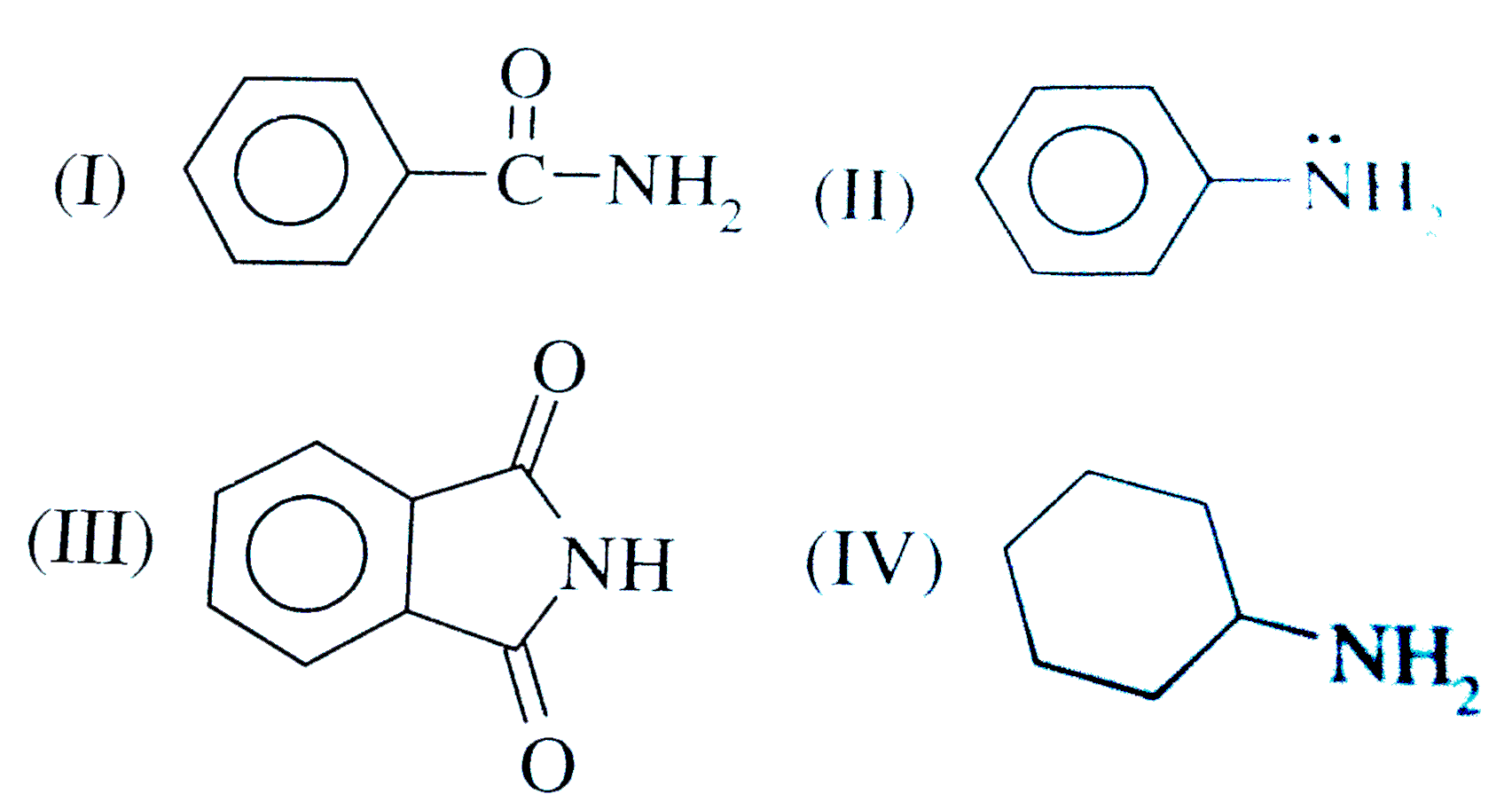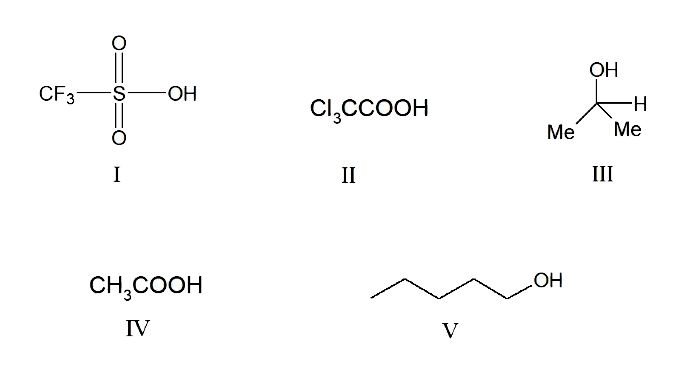Arrange the following sets in order of their basic strength:
Ethylamine, ammonia and triethylamine.
To determine the order of basic strength among ethylamine, ammonia, and triethylamine, we need to analyze the structures and the influence of substituents on the nitrogen atom in each compound. Here’s a step-by-step solution:
Step 1: Understand Basic Strength
Basic strength refers to the ability of a compound to donate a lone pair of electrons. The more readily a compound can donate its lone pair, the stronger the base it is.
Step 2: Analyze the Structures
1. Ammonia (NH₃):
- Structure: H₃N
- Nitrogen has one lone pair of electrons and no alkyl groups attached to it.
2. Ethylamine (C₂H₅NH₂):
- Structure: CH₃CH₂NH₂
- Nitrogen has one lone pair and is attached to one ethyl group (C₂H₅), which can donate electron density through the +I (inductive) effect.
3. Triethylamine (N(C₂H₅)₃):
- Structure: (C₂H₅)₃N
- Nitrogen has one lone pair and is attached to three ethyl groups, which can donate electron density through the +I effect.
Step 3: Evaluate the +I Effect
- The +I effect refers to the electron-donating ability of alkyl groups. The more alkyl groups attached to the nitrogen, the greater the electron density on nitrogen, enhancing its ability to donate electrons.
- Ammonia has no alkyl groups, so it has the least electron density.
- Ethylamine has one ethyl group, which increases the electron density compared to ammonia.
- Triethylamine has three ethyl groups, providing the highest electron density on nitrogen.
Step 4: Compare Basic Strengths
Based on the analysis:
- Triethylamine has the highest basic strength due to the presence of three electron-donating ethyl groups.
- Ethylamine is next, as it has one ethyl group donating electron density.
- Ammonia has the lowest basic strength since it lacks any alkyl groups to enhance electron density.
Conclusion
The order of basic strength is:
Triethylamine > Ethylamine > Ammonia
Basic strength refers to the ability of a compound to donate a lone pair of electrons. The more readily a compound can donate its lone pair, the stronger the base it is.
1. Ammonia (NH₃):
- Structure: H₃N
- Nitrogen has one lone pair of electrons and no alkyl groups attached to it.
- Structure: CH₃CH₂NH₂
- Nitrogen has one lone pair and is attached to one ethyl group (C₂H₅), which can donate electron density through the +I (inductive) effect.
- Structure: (C₂H₅)₃N
- Nitrogen has one lone pair and is attached to three ethyl groups, which can donate electron density through the +I effect.
- The +I effect refers to the electron-donating ability of alkyl groups. The more alkyl groups attached to the nitrogen, the greater the electron density on nitrogen, enhancing its ability to donate electrons.
- Ammonia has no alkyl groups, so it has the least electron density.
- Ethylamine has one ethyl group, which increases the electron density compared to ammonia.
- Triethylamine has three ethyl groups, providing the highest electron density on nitrogen.
Based on the analysis:
- Triethylamine has the highest basic strength due to the presence of three electron-donating ethyl groups.
- Ethylamine is next, as it has one ethyl group donating electron density.
- Ammonia has the lowest basic strength since it lacks any alkyl groups to enhance electron density.
The order of basic strength is:
Triethylamine > Ethylamine > Ammonia
Topper's Solved these Questions
- ORGANIC COMPOUNDS CONTAINING NITROGENBOOK - ICSECHAPTER - ORGANIC COMPOUNDS CONTAINING NITROGENEXERCISE - EXERCISE (PART-II DESCRIPTIVE QUESTIONS- LONG ANSWER QUESTIONS )
57 Videos
- ORGANIC COMPOUNDS CONTAINING NITROGENBOOK - ICSECHAPTER - ORGANIC COMPOUNDS CONTAINING NITROGENEXERCISE - ISC EXAMINATION QUESTIONS ( PART-I OBJECTIVE QUESTIONS)
7 Videos
- ORGANIC COMPOUNDS CONTAINING NITROGENBOOK - ICSECHAPTER - ORGANIC COMPOUNDS CONTAINING NITROGENEXERCISE - EXERCISE (PART-II DESCRIPTIVE QUESTIONS- VERY SHORT ANSWER QUESTIONS )
89 Videos
- ISC QUESTION PAPERBOOK - ICSECHAPTER - ISC QUESTION PAPEREXERCISE - PART-II(SECTION-B)
74 Videos
- P-BLOCK ELEMENTSBOOK - ICSECHAPTER - P-BLOCK ELEMENTSEXERCISE - SOURCE BASED QUESTIONS
10 Videos
Similar Questions
Knowledge Check
Arrange the following in increasing order of basicity.
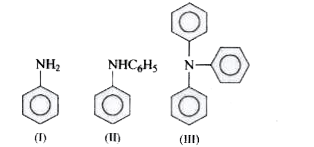 AI<II<IIIBIII<I<IICIII<II<IDII<III<I
AI<II<IIIBIII<I<IICIII<II<IDII<III<IArrange the following in increasing order of basicity :
 AS<Q<R<PBS<Q<P<RCS<R<P<QDP<Q<R<S
AS<Q<R<PBS<Q<P<RCS<R<P<QDP<Q<R<S
Arrange the following in order of their decreasing acidic strength ?
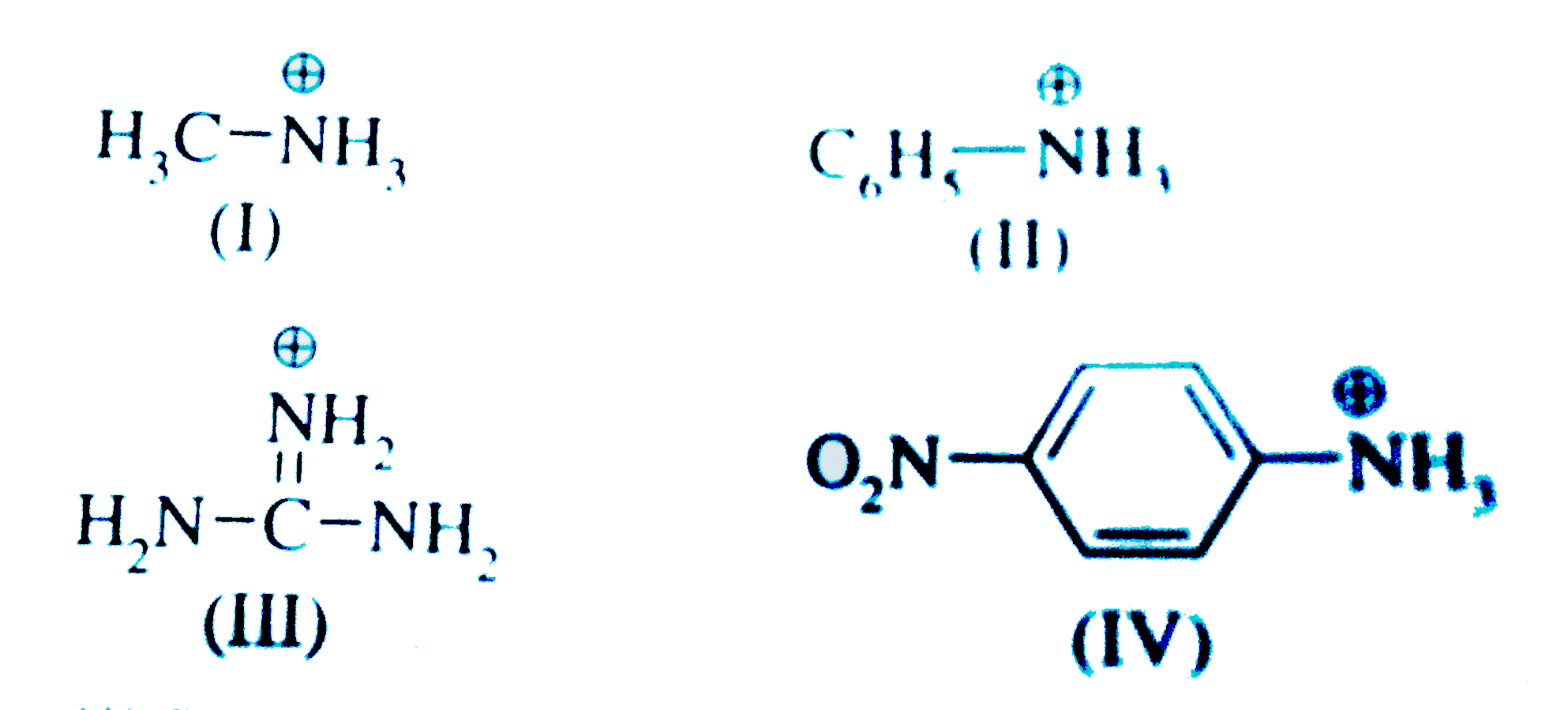
View SolutionArrange the following in decreasing order of their basic strength: ammonia, triethylamine, aniline, ethylamine and diethylamine.
View SolutionArrange the following in decreasing order of their basic strength: ammonia, triethylamine, aniline, ethylamine and diethylamine.
View Solution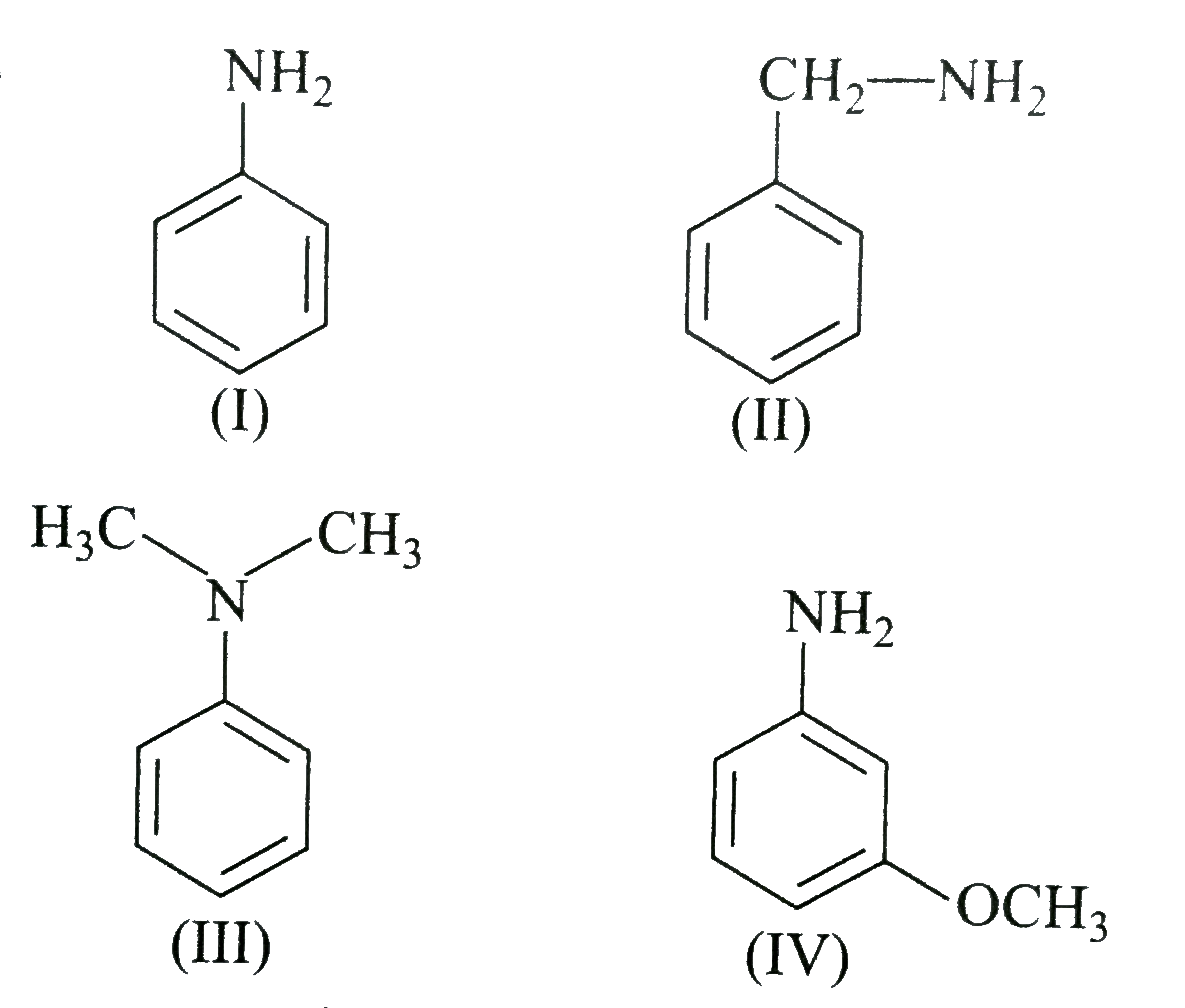
Correct order of basic strength
View SolutionArrange the following group in order of their nucleophilic strength :-
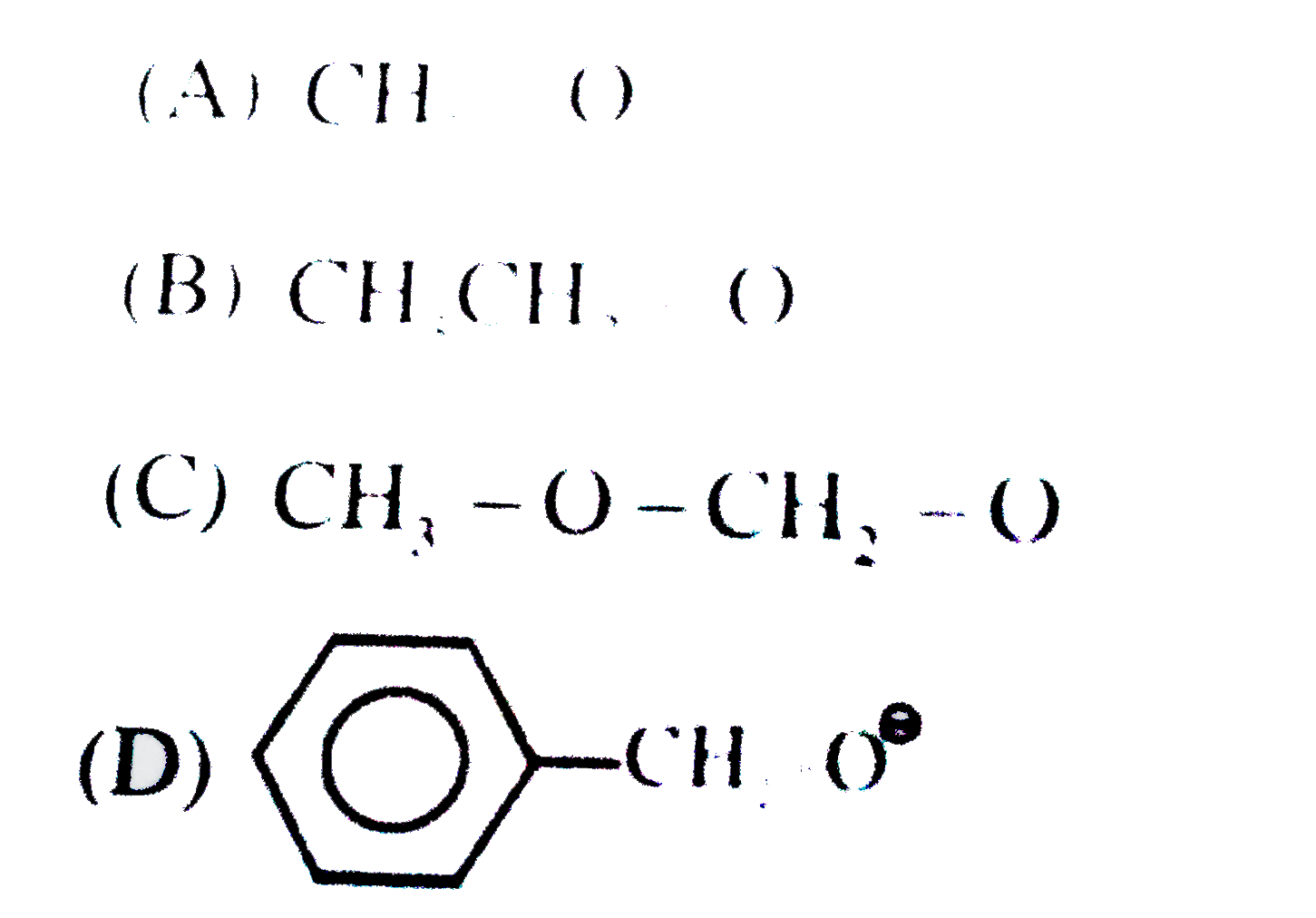
View SolutionArrange the following in incrasing order of electrophilic strength:
_E01_271_Q01.png)
View Solution

